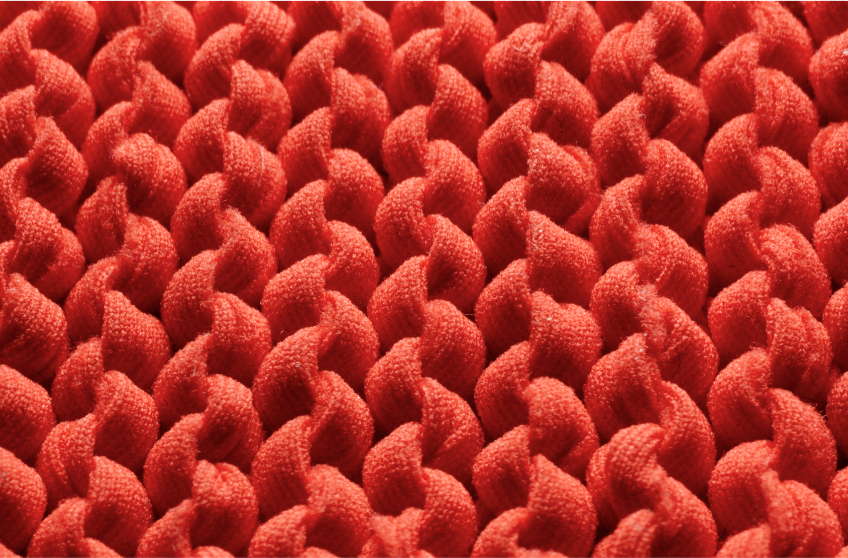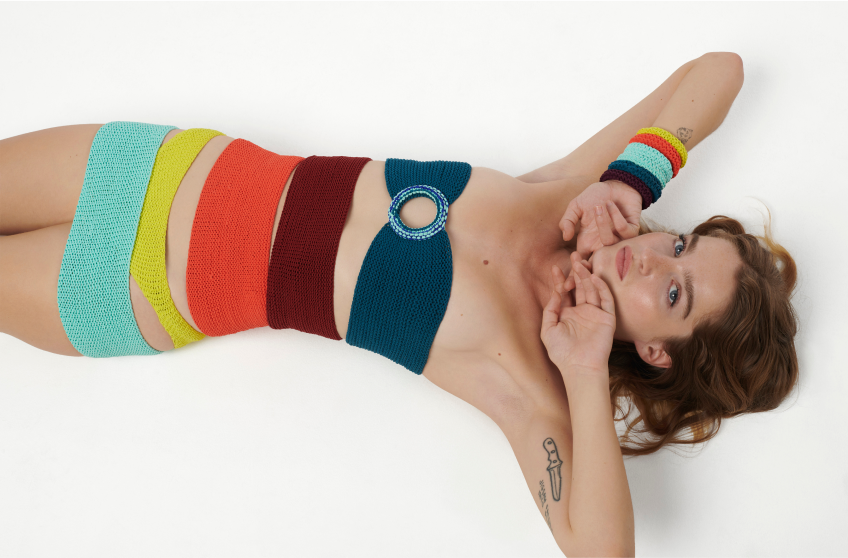Knitting is one of the most accessible DIY crafts. With just 3 techniques—casting on, knitting stitches, and binding off—you can complete your first project. Add a fourth technique, purling, and you unlock the vast majority of stitch patterns, since most are built from knit and purl combinations.
A beginner project is one that lets you explore these basics, helps you build confidence, and gives you the joy of creating something with your own hands.
But getting started, or picking the needles back up after years away, can feel overwhelming. Where to begin? There are just so many options.
The simplest way is to go for a beginner-friendly kit that includes everything you need: the yarn, the pattern, and the tools. But beware—some “easy” projects aren’t so beginner-proof.
Take a scarf, for instance. It sounds like the perfect first make: small width, few cast-on stitches, straightforward shape.
But here’s the catch: for a scarf to look good, it usually needs to be at least 1.5 to 2 meters long. That’s a lot of rows. The risk? You lose motivation, get bored—or worse, drop a stitch halfway through and have to start over.
How about baby clothes? Tiny, quick, adorable. But most patterns involve more advanced techniques: increases, decreases, short rows, buttonholes—all of which shape the garment for a baby’s body.
So, what should your first project really be? And what tools should you use?
Beginner Knitting : The Do’s and Don’ts
Beanies, snoods, cardigans, sweaters, scarves, headbands… the first time you do a search, it’s easy to feel overwhelmed!
To narrow it down, follow these three guidelines:

Choose a pattern that teaches the core techniques gradually. We recommend starting with a project that includes:
- Casting on: learning how to set up your stitches on the needle.
- Knit stitch: practice back and forth in garter stitch for muscle memory.
- Binding off: finish your project cleanly so it doesn’t unravel.


Work on something small. It makes a big difference:
- No boredom: Quick projects are satisfying—you’re less likely to abandon them.
- Mistakes are manageable: Dropped a stitch? No big deal. It’s easier to fix or start over.
- Easy to repeat: Repetition helps solidify skills and boost confidence.
- Room to play: Even as a beginner, you can customize—try stripes, modify proportions, or freestyle from the original pattern. You’ll learn without even realizing it.


Pick a yarn that’s beginner-friendly.
Yarn choice can make or break your first knitting experience.
Here’s what we recommend:
- A smooth, medium-weight yarn that doesn’t split easily and hides minor tension issues. In classic yarns, try merino wool. Or go for our Chamade® stretch yarn, beginner-approved! Its natural elasticity supports your movements and smooths out tension once worn, making small mistakes virtually invisible. It also helps you sense your tension and improve stitch consistency.
- Solid or light colors: They make it easier to see your stitches and count rows. Dark or variegated yarns can obscure your work.

Be aware: Some yarns are trickier to work with.
Tempted by soft alpaca? Gorgeous to the touch, but slippery—stitches may drop and be harder to fix.
Avoid mohair and angora at first—the fluff hides the stitches.
We also suggest skipping linen and cotton for your first try. Their lack of stretch can make movements more difficult and less forgiving.

Choose Simple Construction: Look for beginner patterns with
- Minimal finishing: Finishing is often the trickiest part. Poor seaming can ruin a piece. Aim for minimal seams that don’t affect fit.
- Straightforward construction: Avoid increases and decreases at first. Yes, you can make a sweater or cardigan with simple shapes and no special techniques—once you’ve got a bit of needle confidence.
And don’t forget the tools: picking the right needles is key to a great experience.
La qualité des aiguilles à tricoter fait partie intégrante d’une expérience tricot agréable :
- What size? Start with needles between 4mm and 6mm. They’re large enough for fast progress and small enough to see and fix mistakes.
- Straight or circular? Your choice! At Chamade knitwear, we love circulars for their flexibility and portability.
- Wood, bamboo, or metal? Everyone has a favorite. We prefer wood: smoother than bamboo (which can snag) and less slippery than metal (which can drop stitches).

The Right Beginner Pattern: our recommendations
To recap our “learn to knit” starter guide:
- If you’ve never knit before: Start with a back-and-forth garter stitch pattern using 3 out of the 4 basic techniques, minimal finishing. Good options: a snood, a simple beanie, a headband, or the Chamade® Bandeau décolleté.
- Feeling nervous? Try our mini accessories (scrunchies, friendship bracelets). Made in under an hour, they’re perfect for learning and repeating essential moves. Try our mini accessories (scrunchies, friendship bracelets). Made in under an hour, they’re perfect for learning and repeating essential moves.
- You’ve got the basics and want to try all four techniques? Knit a seamless snood or the Chamade® bandeau top in the round—no seams needed.
Was this guide helpful?
Reach out and share your experience—we’re constantly refining Chamade knitwear, and your feedback helps us improve with every stitch.

